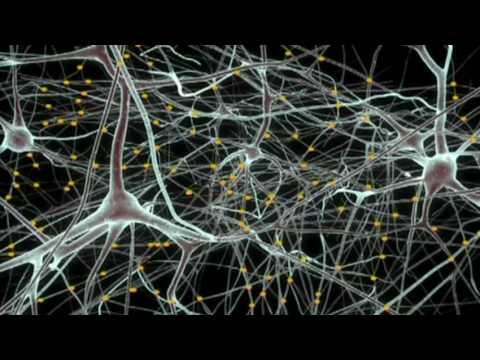A former Weizmann Institute scientist seeks to create an electronic human brain with cognitive abilities to provide insight into the most powerful ‘computer’ in existence.

We already have mechanical and computerized devices that can stand in for human limbs and organs. Now Prof. Henry Markram is working on a computerized version of the human brain, down to its finest synapses. In fact, Markram, who did much of his research at Israel’s Weizmann Institute of Science, tells ISRAEL21c that if his Blue Brain Project goes well, “we anticipate that the brain model we develop will have most, if not all, human cognitive capabilities.”
Markram is currently director of the Brain and Mind Institute of the École Polytechnique in Lausanne, Switzerland. It is there where the Blue Brain Project was founded in May 2005, to study the brain’s “architectural and functional principles.”
Working with a number of international researchers, including Prof. Idan Segev of the Hebrew University of Jerusalem, the project aims to “reverse engineer” the workings of the brain – beginning with the brains of small mammals, says Markram, and culminating in the human brain, a goal that he hopes to achieve by the close of the decade.
Scientists have long known that the brain functions like a mass of small computers, with neurons gathering and transmitting electrochemical signals concerning muscle actions, thoughts, reactions, etc.
The 100 billion or so neurons in the human brain behave like a supercomputer, controlling the overall structure of the body. Upon realizing this, Markram says, he began to analyze and map the structure and relationships among neurons (neocortical microcircuitry), the better to understand how things can go askew in the mind.
Supercomputer brain simulations by 2018
“I realized already in the early 1990s that if we ever want to understand the brain and its diseases, we will need to develop a functional computer model of a working brain,” says Markram. Once built, the computer model – which should be able to almost exactly mimic the activity of a human brain – could be used for basic brain research, for analysis and treatment of brain diseases, and development of new pharmaceutical treatments for brain diseases.
Much of the basic research for Blue Brain was carried out at the Weizmann Institute, Markram tells ISRAEL21c. “I carried out almost all the biological studies on the neocortical microcircuitry at Weizmann when I worked there between 1995 and 2002. This data represents the most comprehensive set of any neural circuit in the world, and provided the blueprints to build the first prototype model of a rat’s neocortical column [a project completed in December 2006]. At Weizmann, I also discovered many of the key principles of how neural microcircuits are designed, concepts which have been essential for the development of the brain models we are working on,” he recounts.
Markram joined the Weizmann Institute after coming on aliya from South Africa in 1988 and serving in the IDF in 1990. “I came on a Karyn Kupcinet Fellowship program from South Africa. I was so excited by what Weizmann had to offer that I stopped my studies in South Africa and moved to Israel,” says Markram, who met his first wife in Israel, where they had three children.
It was his early research at Weizmann that convinced Markram that it was possible to build a model of the human brain: “Science is becoming industrialized, allowing one to screen the brain at all levels at a much faster rate than was ever before possible. For example, we can generate more data in a few months today than in the entire 20th century. So it will become much easier to reverse engineer the composition and function of the elements of the brain.”
As computing power increases, scientists have more access to supercomputers that until now were available only to government and the military. As they harness that power, real-life simulations of the most complicated structures – like that of the human brain – are only a few years away.
Is Markram playing God?
Markram expects that “by 2018 supercomputers will have reached the power needed to accomplish our goal.” And the need is urgent: “Brain diseases cost economies and societies a great deal, so now that we have the ability, we need to do this research as soon as possible,” he asserts.
As with many other breakthrough projects in the life-sciences area, Markram’s Blue Brain project has attracted its share of criticism – on both religious/ethical grounds, as well as from other scientists. Markram isn’t too concerned about the former. “I don’t think it goes against any religion to find out how God built us and to help heal people who are suffering from diseases of the brain,” he responds.
Most of the criticism from religious groups is based not on Markram’s ‘playing God’ by building an artificial brain, but targets the implication that what works for a rat’s cortex will work for a human brain.
“There is a very strong evolutionary component to building Blue Brain because we can see and use the principles of how the brain changes from species to species in order to help us understand the final outcome, the human brain,” Markram says. Some groups, especially Creationists, have given him grief for this approach.
However, he believes that religion need not fear the process of discovery, wherever it may lead, and his Jewish background grants him succor in dealing with religious critics. “Judaism has never been afraid of science and discovering the truth of who we are and what reality is,” he says.
Most of the scientific criticism, on the other hand, comes from groups and individuals who believe that Markram and his group will never be able to achieve a true simulation of the brain – or that they won’t know what to do with it, even if they do succeed.
Better robots, but not virtual humans
“Many of my colleagues do not believe we understand enough about the brain to build it, and that it is too complex to build. Of course I completely disagree with them,” he says, adding that they still have a “20th century mindset, even though we are in the 21st century.”
With the tools available, Markram feels sure that the brain’s secrets will emerge over the coming years. “It’s really not a question of whether it is possible, but a question of what it will take to make it possible. Once you pose the question in this way, you see that the task is completely feasible,” he says.
And then there are the futurists – who fear that the dawn of the artificial brain may lead to a ‘Brave New World,’ in which the brains of members of society will be engineered so as to pigeonhole them into specific economic or political boxes.
Markram allays those fears, saying that although his research will enable society “to learn a lot about the technology side of the brain and enable us to build much better robots, they will still be far from human-like.” Understanding the brain is one thing; making one that can run a virtual human being is a different story altogether.
“The brain runs on 30 watts of power,” Markram says, “and is millions of times more powerful than the most powerful supercomputer that exists today. You would need thousands of giga-watts of electricity, costing billions of dollars, in order to calculate what the brain calculates.”
And the gap between what we would need in order to build robots that can think, act, and make decisions like humans, and what we have available today in terms of materials and technology, is too vast to even contemplate.
So, Markram concludes, there’s no need to fear the Blue Brain. Instead, we can all benefit from the knowledge the project will yield, making it easier for doctors and scientists to improve the lives of those suffering from brain disease, and providing us with insight into the most amazing and complicated computer in existence.













